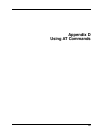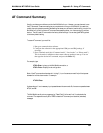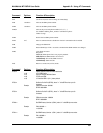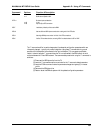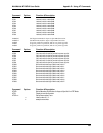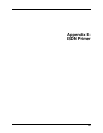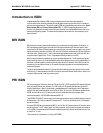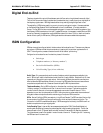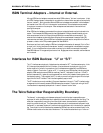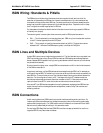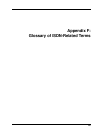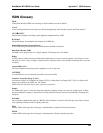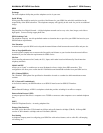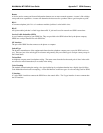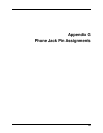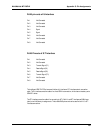
MultiMobile MT128ZLX User Guide Appendix E: ISDN Primer
243
ISDN Terminal Adapters – Internal or External.
Although ISDN terminal adapters are sometimes called “ISDN modems,” this term is a misnomer. In fact,
with ISDN, the signal stream is always digital, no modulation or demodulation are required (as implied by
the term “modem”). Both internal and external ISDN terminal adapters are available. Internal adapters
are inserted into an ISA or PCI slot in the computer’s motherboard. External adapters are connected
through a port connector on the computer. External adapters can be attached or removed without
opening the computer.
When ISDN terminal adapters are connected through a port, a data bottleneck may be introduced to the
system. This is because the ISDN connection has a data speed of 128 kbps, whereas the serial ports on
most computers are limited to 115 kbps (although 230 kbps is now available on some models). The
external terminal adapter can also slow down computer performance because it uses significant CPU
resources when connected. External ISDN terminal adapters are best used on computers with a Pentium
processor, or better, and a CPU processing speed of at least 200 MHz.
Some important functionality resides in ISDN terminal adapters themselves, for example, Point-to-Point
protocol, multi-linking (where two B-channels are “bonded” or used together to double data throughput
speed). It is up to the subscriber to be sure that correct and up-to-date drivers are used to implement
these ISDN features. Drivers generally evolve over time. Bugs appear and are remedied, and new features
are introduced.
Interfaces for ISDN Devices: “U” or “S/T”
The “U” interface uses a single-pair of telephone wires, whereas the “S/T” interface uses two pairs. In the
U.S., telcos provide customers with the U interface. It carries data over the single-pair wiring in full-
duplex mode, but is limited in its connections: the U interface accommodates only one ISDN device,
namely a “Network Termination 1” device, or NT-1. In practice, many ISDN devices (including terminal
adapters, ISDN-ready phones, and ISDN fax machines), have NT-1 devices built into them. If the NT-1
device is a separate unit, it generally must be powered from a wall outlet (instead of drawing power from
the telephony system). The purpose of the NT-1 is really to convert the single-pair signal into a dual-pair
signal, which is the S/T interface. The U interface is generally easy to install.
The S/T interface is commonly available in Europe and elsewhere in the world. The S/T interface is a bus
arrangement to which as many as seven ISDN devices can be connected. The dual-pair wiring of the S/T
interface allows for separate physical paths for “transmit” data and “receive” data.
The Telco/Subscriber Responsibility Boundary
The “demarc”, or demarcation point between equipment for which the telco is responsible versus
equipment for which the ISDN subscriber is responsible lies at the wall of the subscriber’s building. The
subscriber is responsible for everything from the wall jack inward, whereas the telco is responsible for
everything outside the wall jack. This means subscribers must pay for maintenance of equipment inside
the demarc. In most cases, the telco will install and maintain equipment within the demarc for a specified
fee. The wall jack from which the subscriber accesses the ISDN service must be connected directly to the
ISDN service as it exists on the telco side of the demarc. This is called the subscriber drop or “home run.”



